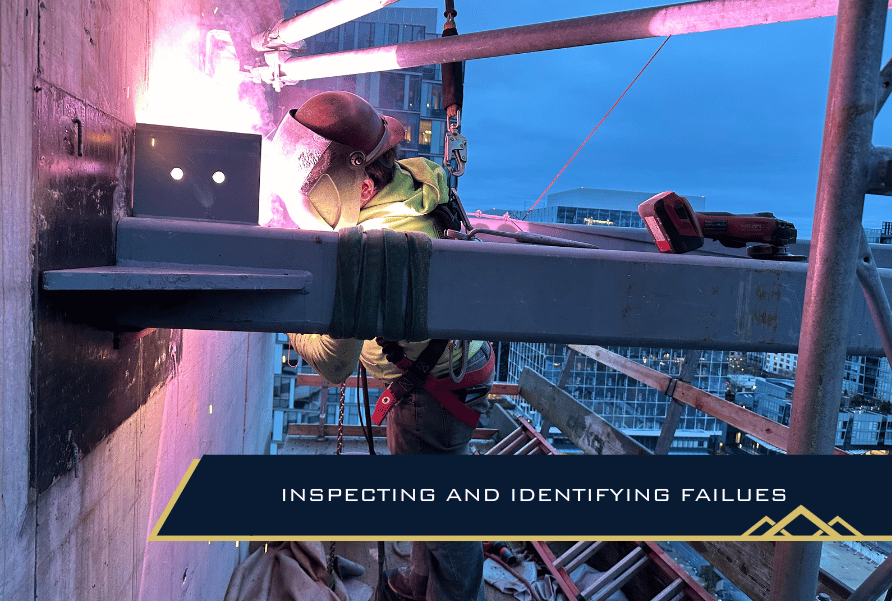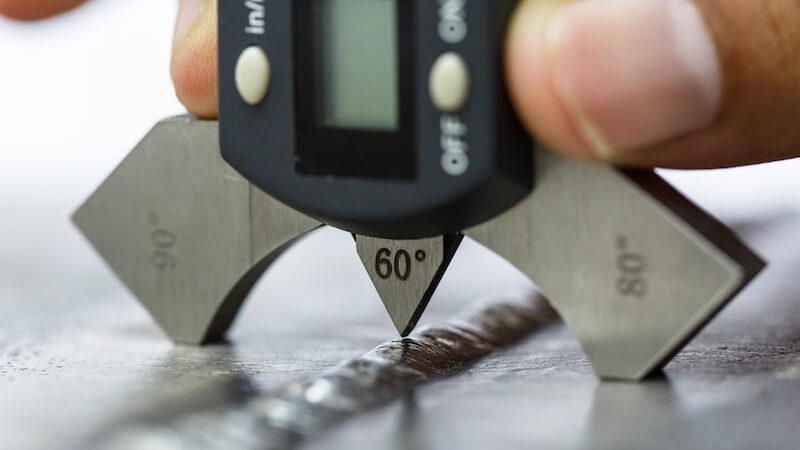Checking Out the Value of Welding Assessment in Industrial Applications: Guarding Against Failings and Enhancing Longevity
Welding examination offers as a crucial line of protection in commercial applications, making certain the structural stability and dependability of bonded components. By systematically identifying flaws such as porosity and insufficient blend, inspections not only prevent failures but likewise expand the lifespan of necessary possessions.
Duty of Welding Assessment
Welding examination acts as a vital safeguard in commercial applications, ensuring that welded structures satisfy defined standards of high quality and security. This process involves a methodical exam of welds to confirm their integrity, stamina, and compliance with well established codes and requirements. The role of welding evaluation is complex, incorporating both visual analyses and non-destructive testing approaches, which might consist of ultrasonic, radiographic, or magnetic particle testing.

In addition, welding inspection plays an important duty in regulatory conformity. Ultimately, the function of welding examination is vital in promoting safety, improving performance, and safeguarding financial investments in industrial facilities.
Common Welding Flaws

One of one of the most common problems is porosity, defined by small gas pockets entraped within the weld steel. This takes place because of impurities or improper securing gas, compromising the weld's strength. Another considerable problem is incomplete fusion, where the weld steel stops working to bond appropriately with the base product, potentially bring about architectural weak points.
Splits can additionally create during or after the welding procedure, commonly connected to thermal stress and anxieties or incorrect cooling prices. Additionally, undercutting, where the base metal is deteriorated along the weld bead, can weaken the joint and is commonly triggered by excessive warmth input or incorrect technique.
Additionally, absence of infiltration takes place when the weld steel does not get to the origin of the joint, bring about insufficient toughness. Understanding these usual problems is critical for assessors and welders alike to ensure that welded structures satisfy security and efficiency requirements, eventually protecting against possible failings in industrial applications.
Benefits of Regular Examinations
Normal assessments work as a critical safeguard in ensuring the reliability and durability of bonded frameworks. These assessments determine possible issues and weak points that may compromise the honesty of welds, permitting timely removal before problems rise. By implementing a structured inspection regimen, companies can dramatically lower the risk of devastating failings that may cause expensive downtime, tools substitute, or even mishaps.
Additionally, regular assessments add to enhanced quality assurance throughout the welding procedure. By adhering to a consistent inspection schedule, business can make sure that their welding methods meet established quality criteria and best techniques. This not only cultivates a culture of accountability but additionally motivates constant enhancement among welding personnel.
Additionally, routine inspections facilitate far better upkeep planning. By recognizing wear and tear early, companies can strategically arrange repair services and substitutes, minimizing disruption to procedures. This proactive technique inevitably leads to extended property lifespan and improved overall performance.
Last but not least, a dedication to normal assessments can improve a business's credibility in the market. Customers and stakeholders significantly worth organizations that prioritize safety and security and quality, therefore boosting trust and potentially resulting in boosted business possibilities.
Market Specifications and Regulations
Following industry standards and guidelines is a basic element of welding evaluation that complements the benefits of routine analyses. These requirements, established by organizations such as the American Welding Society (AWS) and the American Culture of Mechanical Designers (ASME), provide a structure for ideal practices in welding procedures, materials, and evaluation strategies. Compliance with these regulations makes sure that welds satisfy the needed top quality and security benchmarks, substantially lowering the threat of additional reading structural failings.
Regulative bodies like the Occupational Safety and Health And Wellness Administration (OSHA) better apply guidelines that shield workers and the environment during welding procedures. By following these developed criteria, industries can improve the dependability of their components and structures, guaranteeing they execute as meant under various functional conditions.
Furthermore, adherence to industry standards promotes consistency in quality assurance, promoting smoother communication among stakeholders and regulatory companies. This placement not just reduces responsibility dangers but likewise boosts the integrity of organizations in open markets. Ultimately, compliance with welding standards and laws is not just a legal commitment; it is a crucial financial investment in security, efficiency, and long-lasting operational success.
Future Trends in Welding Assessment
As industries remain to advance, the future of welding evaluation is positioned to incorporate innovative technologies that enhance precision and efficiency. Among one of the most substantial fads is the fostering of automation and robotics in examination procedures. Automated systems can conduct assessments swiftly, minimizing human error and boosting throughput in manufacturing environments.
Additionally, the assimilation of man-made intelligence (AI) and artificial intelligence formulas will certainly allow predictive analytics, enabling for real-time analyses and proactive upkeep (Welding Inspection Gilbert Arizona). By examining information from previous inspections, these innovations can recognize patterns that could indicate possible failures, consequently expanding the life the original source expectancy of bonded parts

Furthermore, the fad in the direction of digitalization will cause boosted data management systems that facilitate far better tracking, reporting, and conformity with sector standards. In summary, the future of welding evaluation is defined by technical improvements that promise to substantially boost dependability, safety, and functional efficiency in various industrial applications.
Final Thought
In conclusion, welding inspection serves a crucial feature in making sure the integrity and resilience of bonded frameworks throughout numerous commercial applications. As developments in innovation continue to develop, the future of welding assessment guarantees raised accuracy and efficiency, ultimately contributing to the longevity of essential infrastructures.
Welding evaluation offers as an essential line of defense in commercial applications, making sure the structural stability and integrity of welded parts.Welding assessment serves as an important guard in commercial applications, guaranteeing that bonded structures fulfill specified requirements of quality and security - Welding Inspection Gilbert Arizona. Inevitably, the function of welding evaluation is crucial in promoting security, enhancing performance, Find Out More and shielding financial investments in industrial infrastructure
These requirements, established by organizations such as the American Welding Society (AWS) and the American Culture of Mechanical Engineers (ASME), provide a structure for finest practices in welding procedures, materials, and inspection techniques.In verdict, welding inspection serves a crucial feature in making sure the stability and durability of bonded structures throughout numerous industrial applications.